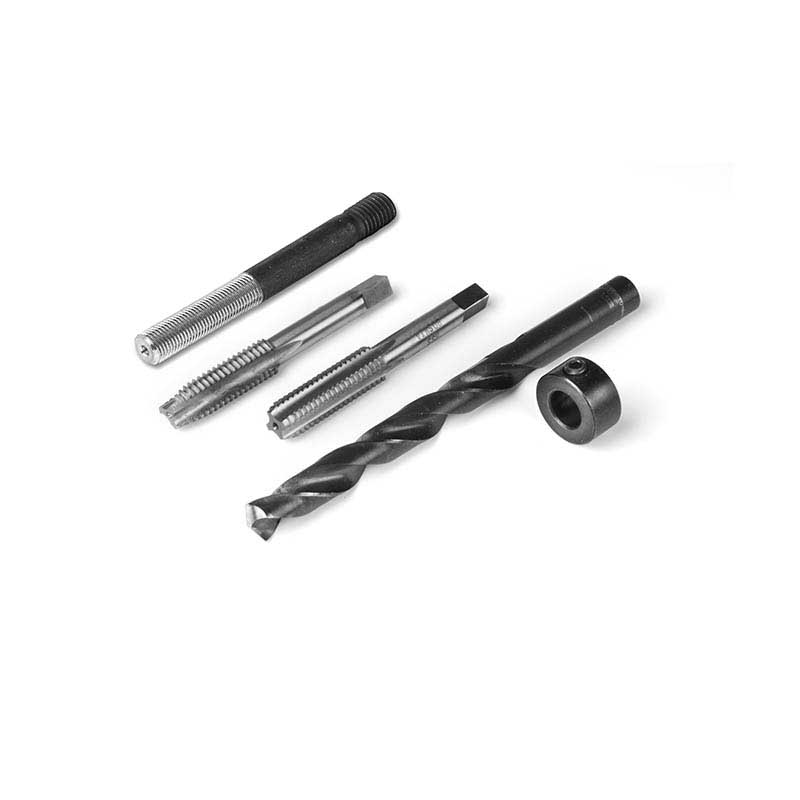I had to remove the manifold and get a new one. The original Manifold was completely corroded and rusted away. When I removed it, the stud closest to the transmission pulled out.
The threads were shot in the block, a regular 3/8ths stud just spun freely.
So I cleaned up the hole with a drill bit, and tapped it for a 7/16ths repair stud. I tried to do it free hand because I had so much better access with the manifold removed.
Unfortunately I must have had the tap a little crooked when making the new threads. The repair stud is about 3/16ths off in alignment at the end. I can't slide the new manifold on.
I removed the stud before the JB weld setup so now I have to figure out how to get a stud in there that'll line up correctly. As far as I can tell, I have 2 choices...
1) put the manifold on, use it as a guide, and try to re tap the hole. I'm not sure if this will work, because there's already threads in there. Will there be enough material for the new threads to hold? Then I would just JB weld the repair stud in and let it setup before I torque down.
2) Put the manifold on as a guide and drill the hole out a little more to put a Helicoil in there for the repair stud. Seal the Helicoil and stud with JB weld.
Any tips or suggestions would be appreciated. I would much prefer option 1, but I don't have much experience with this and don't want to mess things up without getting some guidance.
The threads were shot in the block, a regular 3/8ths stud just spun freely.
So I cleaned up the hole with a drill bit, and tapped it for a 7/16ths repair stud. I tried to do it free hand because I had so much better access with the manifold removed.
Unfortunately I must have had the tap a little crooked when making the new threads. The repair stud is about 3/16ths off in alignment at the end. I can't slide the new manifold on.
I removed the stud before the JB weld setup so now I have to figure out how to get a stud in there that'll line up correctly. As far as I can tell, I have 2 choices...
1) put the manifold on, use it as a guide, and try to re tap the hole. I'm not sure if this will work, because there's already threads in there. Will there be enough material for the new threads to hold? Then I would just JB weld the repair stud in and let it setup before I torque down.
2) Put the manifold on as a guide and drill the hole out a little more to put a Helicoil in there for the repair stud. Seal the Helicoil and stud with JB weld.
Any tips or suggestions would be appreciated. I would much prefer option 1, but I don't have much experience with this and don't want to mess things up without getting some guidance.




Comment